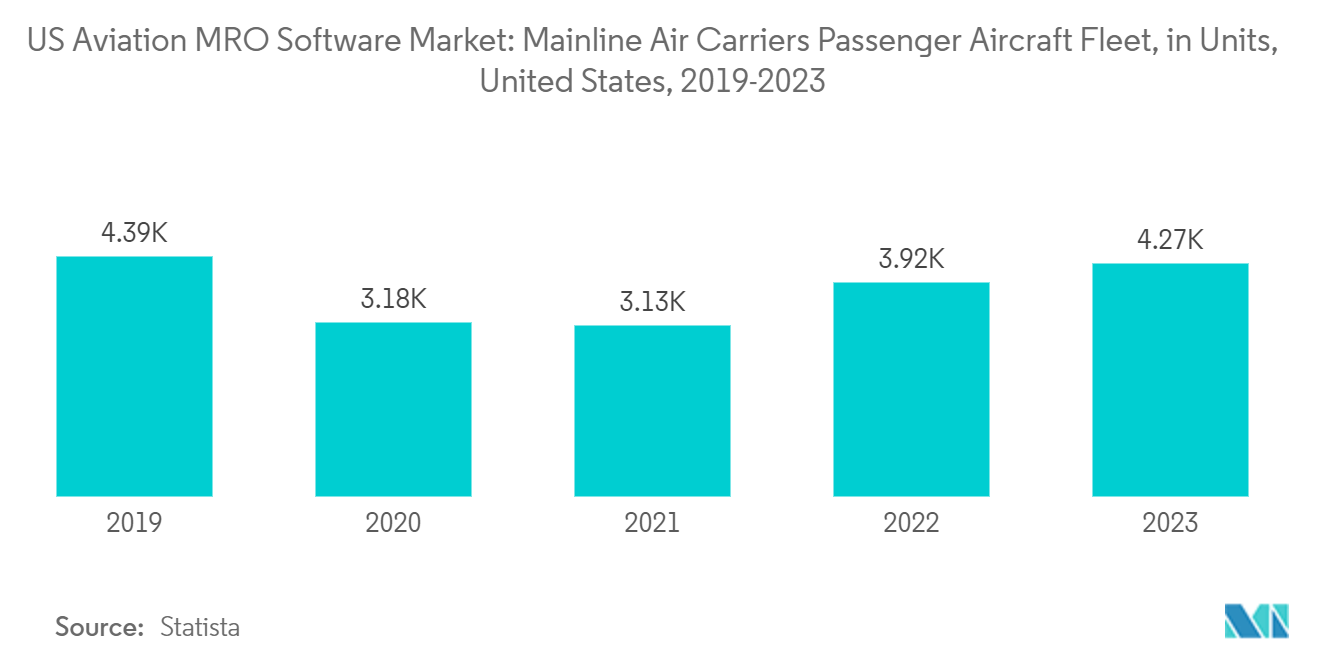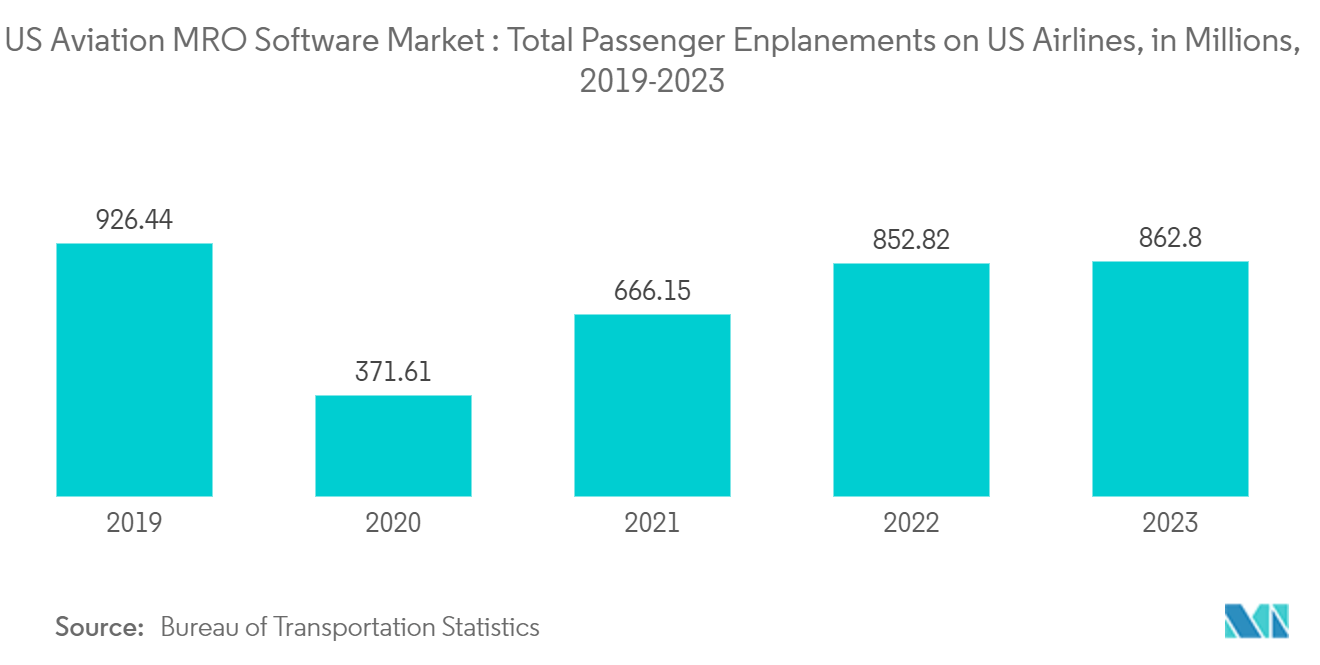Market Trends of US Aviation MRO Software Industry
The On-premise Segment is Expected to Dominate the Market During the Forecast Period
The on-premise solutions offer numerous advantages, such as excellent availability/reliability, enhanced speed, and security. These systems work with local servers; thus, the speed can be well-managed and controlled. Furthermore, the solutions have low operating costs as they require a one-time purchasing fee and maximum control over other MRO solutions.
The US has the largest commercial aircraft fleet, which implies a growing number of aging aircraft fleets. The presence of several MRO facilities and increasing expenditure on aircraft upgrade programs create demand for advanced MRO software, which propels market growth. For instance, in March 2023, AAR Corporation, a provider of aviation services to commercial and government operators, OEMs, and MROs, acquired Trax USA Corp., an independent provider of aircraft MRO and fleet management software. The acquisition will accelerate AAR’s strategy to offer digital solutions to aftermarket end users.
Such developments and the introduction of advanced on-premises MRO software solutions that provide enhanced security, higher availability, and reliability are expected to drive the market's growth during the forecast period.

The Airlines Segment is Projected to Record the Highest Growth Rate in the Market
The US is one of the largest markets for aviation MRO software, owing to high demand for air travel, large fleet size, and significant investments in aircraft modernization programs from the US. Increasing air traffic, rising expenditure on aviation infrastructure, and aircraft modernization programs from airlines in the US drive the market growth.
Some of the largest airlines in the US are American Airlines, United Airlines, Delta Airlines, Southwest Airlines, Alaska Airlines, and others. These airlines adopt advanced MRO software to improve the life of aircraft. For instance, in February 2024, American Airlines announced plans to hire hundreds of new employees for its two largest maintenance bases in the US. In late 2023, the airline received funds of USD 22 million from the state of Oklahoma’s Business Expansion Incentive Program to grow and upgrade its MRO facility in Tulsa. As a part of the program, the carrier plans to add more than 300 new technical operations employees, which include airframe and powerplant mechanics, machinists, engineers, welders, and maintenance planners.
Hence, the growing adoption of advanced MRO software for aircraft and rising investments from airlines for aircraft modernization programs to extend the life of aging aircraft are expected to boost the market's growth during the forecast period.


